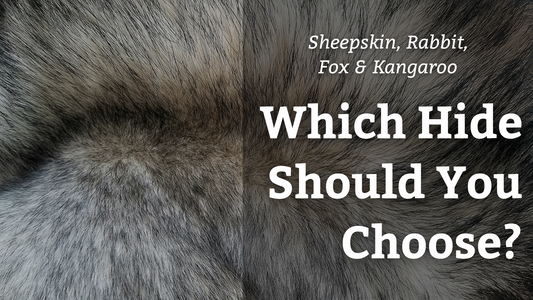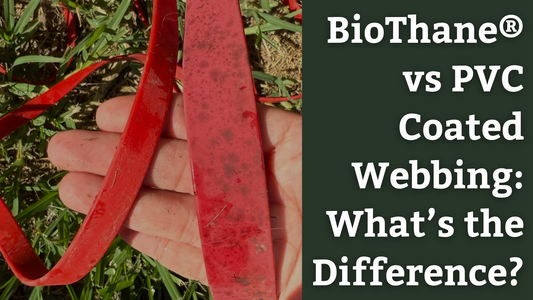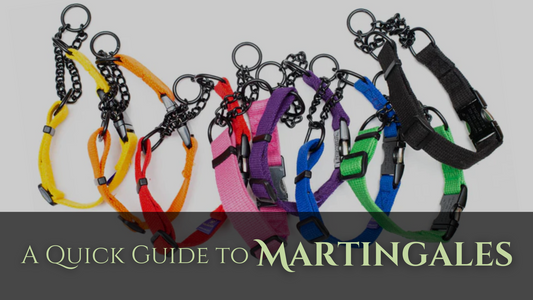Playing tug, as you probably know by now, is a hugely beneficial activity for both you and your dog. The game of tug is essentially where we use tug of war toys for dogs, to play a fun and interactive game together. We can use this game as a reward and training tool to help build confidence, stamina, and self-control in your dog. Alongside encouraging and building a flourishing relationship
With no real downsides, it’s accessible for almost any dog and owner!
After all, it’s not exactly rocket science.
Step one: Interactive dog toy goes in mouth.
Step two: Play time!

Whether you are a total newbie to the game of using dog toys to play tug, or an experienced hand with piles of interactive toys for dogs in your cupboard (looks in the mirror), there are still important safety guidelines we should be following.
This also includes choosing the right tug toy (wink wink, over here), to ensure the best possible experience for you and your dog!

The 6 Essential Rules of Safe Tug
This is an active game for both you and your dog. It involves a lot of muscles and a full mouth of sharp teeth (just the dog’s hopefully). Which means a bit of inherent risk of someone straining something or catching a tooth by accident.
Although this probably seems like kind of a no-brainer, remember that dogs can’t always tell us when something doesn’t feel right! And, if your dog is anything like mine, nothing short of being on death’s door would probably stop her from playing tug. So, this is one of those times where we have to be the responsible ones (though life with a malinois means thats every day of my life.)
1. Tug Grip
When holding your dog tug toy, you want to make sure that it is at a comfortable level for both you and your dog. This way we avoid hunching over or otherwise awkwardly positioning our backs, and your dog isn’t at risk of straining their neck by reaching up too high.
After all, there’s a substantial height difference between you and your dog! Make sure you’re gripping the tug at the opposite end to where your dog grips it to reduce the chance of them chomping down on your fingers!
This is best achieved if the tug suits your dog’s mouth, as the right toy will give them better grip (check here for choosing the right tug!). Try a tug with a longer handle to ensure you have the length needed to hold the tug lower, and also keep your fingers away from pup’s mouth. Obviously as you and your dog get more experienced and proficient at tug, you can experiment with different types of tug toys like bite pillows or ring tugs.
2. Get Low
As mentioned above, you don’t want to hold the tug too high up. Keeping it close to your dog’s head level is always a good starting position. Then for a bit of variety, try playing with the tug lower to the ground as well. Anyone who has played with a cat should have a pretty good idea of how that goes.
Tug is a game that engages and triggers predatory instincts in your dog, so by taking the toy lower and wiggling it around; you’re doing a good job of mimicking prey movement. For dogs that don’t express much natural interest in tug, this is a great way to start building prey drive, and that love of tug until the game becomes a reward in and of itself.

3. Landing Safely
Some dogs clamp those jaws down so tight you can lift the whole tug up and the dog comes with it! While comical, we do feel obligated to point out that unlike cats, dogs are not always adept at landing safely on the ground.
So, while you can have a bit of fun with this aspect of your dog’s enthusiasm, we do not recommend that you lift the dog off the ground in this manner, as a fall can injure their neck and spine. If you do end up with an accidental lift-off, make sure you get their back legs gently on the ground, so they’re able to land back down safely.
4. Do the (Loco)Motion
When playing tug, a good rule of thumb is to always be moving backwards, as it creates better grip, triggers drive (as they’re pursuing you) and much safer in the sense that you can control where the game is going. Once you’ve got a good grip and you want to add a bit more movement, make sure you keep the tug going side to side.
While our furry companions are tough in many ways, it’s easy to risk an injury by playing in the wrong way. Vigorous up/down movements also carry a risk of damaging your dog’s spine. If you think about the way a dog might play tug with another dog, they’re not going to be doing up and down motions, but side to side thrashing, and pulling each other backwards and forwards. Try to keep that in mind when playing!
5. Be Mindful of Age
Keep your dog’s age in mind when playing tug! When looking at our senior dogs or smaller pups; the mind may be willing, but the flesh is weak! And we mean that in the kindest way possible.
Little pups certainly have the energy and desire to play some vigorous tug, but our adult human strength is not proportionate to theirs – this is especially important to remember for bigger breeds, where size can be deceptive.

With senior dogs, it’s the same thing, but inverted. They’ve had a lifetime of playing tug and running around like a mad thing. They know how much fun it is, and don’t realise that they’re less able to keep up these days.
We can’t forget that their bodies are past prime; and high intensity tug carries a higher risk of injury. Now excuse me while I go and cry over my old-lady dog who thinks she’s still a puppy.
6. You Control The Game
Lastly, remember that at the end of the day, you control the game. This doesn’t mean you always have to win, cause really, that’s no fun for your dog. Instead, it means you create rules and boundaries around the game to make it a smoother experience for you both.
Much like children, dogs thrive with boundaries! You choose when to play tug – teach your dog to wait politely until you give a release word to start, or else you’ll end up with nipped fingers. Teach your dog to release the tug on command and then reward them by playing again. This allows you to engage in short, controlled bursts of tug, and also teaches your dog that it’s definitely not the end of the world if they give up the tug!

Now, just a friendly reminder that even though we said ‘rules’, there’s definitely no tug police out to get you! But we do strongly recommend that any newbie tugger should keep these ‘guidelines’ fresh in mind in order to have the best possible experience when playing tug.
At the end of the day, tug should be a fun game for both parties, and when played correctly, is one of the best tools to build a healthy and respectful relationship with your dog. Remember: children playing with dogs should always be under direct supervision of responsible adult.




